Timed intercourse for couples trying to conceive
- PMID: 37709293
- PMCID: PMC10501857
- DOI: 10.1002/14651858.CD011345.pub3
Timed intercourse for couples trying to conceive
Abstract
Background: Many factors influence fertility, one being the timing of intercourse. The 'fertile window' describes a stage in the cycle when conception can occur and is approximately five days before to several hours after ovulation. 'Timed intercourse' is the practice of prospectively identifying ovulation and, thus, the fertile window to increase the likelihood of conception. Methods of predicting ovulation include urinary hormone measurement (luteinising hormone (LH) and oestrogen), fertility awareness-based methods (FABM) (including tracking basal body temperatures, cervical mucus monitoring, calendar charting/tracking apps), and ultrasonography. However, there are potentially negative aspects associated with ovulation prediction, including stress, time consumption, and cost implications of purchasing ovulation kits and app subscriptions. This review considered the evidence from randomised controlled trials (RCTs) evaluating the use of timed intercourse (using ovulation prediction) on pregnancy outcomes.
Objectives: To evaluate the benefits and risks of ovulation prediction methods for timing intercourse on conception in couples trying to conceive.
Search methods: We searched the Cochrane Gynaecology and Fertility (CGF) Group Specialised Register, CENTRAL, MEDLINE, and Embase in January 2023. We also checked the reference lists of relevant studies and searched trial registries for any additional trials.
Selection criteria: We included RCTs that compared methods of timed intercourse using ovulation prediction to other forms of ovulation prediction or intercourse without ovulation prediction in couples trying to conceive.
Data collection and analysis: We used standard methodological procedures recommended by Cochrane to select and analyse studies in this review. The primary review outcomes were live birth and adverse events (such as depression and stress). Secondary outcomes were clinical pregnancy, pregnancy (clinical or positive urinary pregnancy test not yet confirmed by ultrasound), time to pregnancy, and quality of life. We assessed the overall quality of the evidence for the main comparisons using GRADE methods.
Main results: This review update included seven RCTs involving 2464 women or couples. Four of the five studies from the previous review were included in this update, and three new studies were added. We assessed the quality of the evidence as moderate to very low, the main limitations being imprecision, indirectness, and risk of bias. Urinary ovulation tests versus intercourse without ovulation prediction Compared to intercourse without ovulation prediction, urinary ovulation detection probably increases the chance of live birth in couples trying to conceive (risk ratio (RR) 1.36, 95% confidence interval (CI) 1.02 to 1.81, 1 RCT, n = 844, moderate-quality evidence). This suggests that if the chance of a live birth without urine ovulation prediction is 16%, the chance of a live birth with urine ovulation prediction is 16% to 28%. However, we are uncertain whether timed intercourse using urinary ovulation detection resulted in a difference in stress (mean difference (MD) 1.98, 95% CI -0.87 to 4.83, I² = 0%, P = 0.17, 1 RCT, n = 77, very low-quality evidence) or clinical pregnancy (RR 1.09, 95% CI 0.51 to 2.31, I² = 0%, 1 RCT, n = 148, low-quality evidence). Similar to the live birth result, timed intercourse using urinary ovulation detection probably increases the chances of clinical pregnancy or positive urine pregnancy test (RR 1.28, 95% CI 1.09 to 1.50, I² = 0, 4 RCTs, n = 2202, moderate-quality evidence). This suggests that if the chance of a clinical pregnancy or positive urine pregnancy test without ovulation prediction is assumed to be 18%, the chance following timed intercourse with urinary ovulation detection would be 20% to 28%. Evidence was insufficient to determine the effect of urine ovulation tests on time to pregnancy or quality of life. Fertility awareness-based methods (FABM) versus intercourse without ovulation prediction Due to insufficient evidence, we are uncertain whether timed intercourse using FABM resulted in a difference in live birth rate compared to intercourse without ovulation prediction (RR 0.95, 95% CI 0.76 to 1.20, I² = 0%, 2 RCTs, n = 157, low-quality evidence). We are also uncertain whether FABM affects stress (MD -1.10, 95% CI -3.88 to 1.68, 1 RCT, n = 183, very low-quality evidence). Similarly, we are uncertain of the effect of timed intercourse using FABM on anxiety (MD 0.5, 95% CI -0.52 to 1.52, P = 0.33, 1 RCT, n = 183, very low-quality evidence); depression (MD 0.4, 95% CI -0.28 to 1.08, P = 0.25, 1 RCT, n = 183, very low-quality evidence); or erectile dysfunction (MD 1.2, 95% CI -0.38 to 2.78, P = 0.14, 1 RCT, n = 183, very low-quality evidence). Evidence was insufficient to detect a benefit of timed intercourse using FABM on clinical pregnancy (RR 1.13, 95% CI 0.31 to 4.07, 1 RCT, n = 17, very low-quality evidence) or clinical or positive pregnancy test rates (RR 1.08, 95% CI 0.89 to 1.30, 3 RCTs, n = 262, very low-quality evidence). Finally, we are uncertain whether timed intercourse using FABM affects the time to pregnancy (hazard ratio 0.86, 95% CI 0.53 to 1.38, 1 RCT, n = 140, low-quality evidence) or quality of life. No studies assessed the use of timed intercourse with pelvic ultrasonography.
Authors' conclusions: The new evidence presented in this review update shows that timed intercourse using urine ovulation tests probably improves live birth and pregnancy rates (clinical or positive urine pregnancy tests but not yet confirmed by ultrasound) in women under 40, trying to conceive for less than 12 months, compared to intercourse without ovulation prediction. However, there are insufficient data to determine the effects of urine ovulation tests on adverse events, clinical pregnancy, time to pregnancy, and quality of life. Similarly, due to limited data, we are uncertain of the effect of FABM on pregnancy outcomes, adverse effects, and quality of life. Further research is therefore required to fully understand the safety and effectiveness of timed intercourse for couples trying to conceive. This research should include studies reporting clinically relevant outcomes such as live birth and adverse effects in fertile and infertile couples and utilise various methods to determine ovulation. Only with a comprehensive understanding of the risks and benefits of timed intercourse can recommendations be made for all couples trying to conceive.
Copyright © 2023 The Cochrane Collaboration. Published by John Wiley & Sons, Ltd.
Conflict of interest statement
TG has no conflicts of interest to declare.
JR has no conflicts of interest to declare.
EG has no conflicts of interest to declare.
CB has no conflicts of interest to declare.
Figures
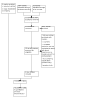
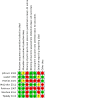

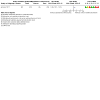
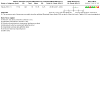
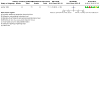
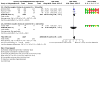
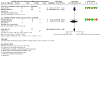
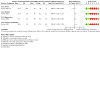
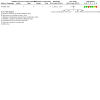
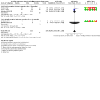
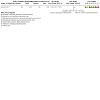
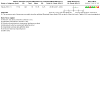
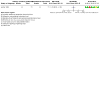
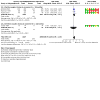
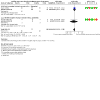
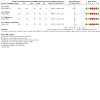

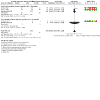
Update of
-
Timed intercourse for couples trying to conceive.Cochrane Database Syst Rev. 2015 Mar 17;(3):CD011345. doi: 10.1002/14651858.CD011345.pub2. Cochrane Database Syst Rev. 2015. Update in: Cochrane Database Syst Rev. 2023 Sep 15;9:CD011345. doi: 10.1002/14651858.CD011345.pub3. PMID: 25775926 Updated.
References
References to studies included in this review
Johnson 2022 {published data only}
-
- NCT03424590. Connected ovulation test efficacy study [Libera Efficacy 2 Cycles at Home Study]. Clinicaltrials.gov/show/NCT03424590 February 7, 2018.
Leader 1992 {published and unpublished data}
-
- Leader LR, Russell T, Stenning B. The use of Clearplan home ovulation detection kits in unexplained and male factor infertility. The Australian & New Zealand Journal of Obstetrics & Gynaecology 1992;32(2):158-60. - PubMed
Martins 2022 {published data only}
-
- Martins MV, Fernandes J, Pedro J, Barros A, Xavier P, Schmidt L, et al. Effects of trying to conceive using an every-other-day strategy versus fertile window monitoring on stress: a 12-month randomized controlled trial. Human Reproduction 2022;37(12):2845–2855. [DOI: ] - PubMed
-
- Martins MV. Sexual Timing in Couples Actively Trying to Conceive (SEXTACTIC). ClinicalTrials.Gov Jan 2021. [CLINICALTRIALS.GOV: NCT02814006]
McLindon 2011 {unpublished data only}
-
- McLindon LA, Beckmann MM. The symptothermal method for conception in subfertility – a randomised controlled trial. Unpublished.
Robinson 2007 {published and unpublished data}
-
- Robinson J, Wakelin M, Ellis JE. Increased pregnancy rate with use of the Clearblue easy fertility monitor. Fertility and Sterility 2007;87:329-34. - PubMed
Stanford 2014 {published data only}
-
- NCT00161395. Study of time to pregnancy in normal fertility [Randomized trial of fertility awareness and time to pregnancy in couples of normal fertility]. https://classic.clinicaltrials.gov/ct2/show/NCT00161395 First Posted: September 12, 2005.
Tiplady 2013 {published and unpublished data}
-
- Ledger W, Jones G, Tiplady S, Duffy S, Johnson S. Impact of digital home ovulation test usage on stress, psychological wellbeing and quality of life during evaluation of subfertility: a randomised controlled trial. Fertility and Sterility 2013;100(3):S411.
-
- NCT01084304. Assessment of stress levels in consumers using ovulation tests in order to conceive [Assessment of stress levels in consumers using ovulation tests in order to conceive]. https://clinicaltrials.gov/study/NCT01084304 2010-03-09 earliest version on record.
References to studies excluded from this review
Corsan 1993 {published data only}
-
- Corsan GH, Blotner MB, Bohrer MK, Shelden R, Kemmann E. The utility of a home urinary LH immunoassay in timing the postcoital test. Obstetrics and Gynecology 1993;81(5 pt 1):736-8. - PubMed
Fehring 1994 {published data only}
-
- Fehring RJ, Lawrence D, Philpot C. Use effectiveness of the Creighton model ovulation method of natural family planning. Journal of Obstetric, Gynecologic, and Neonatal Nursing 1994;23(4):303-9. - PubMed
Fehring 2013 {published data only}
-
- Fehring RJ, Schneider M, Raviele K, Rodriguez D, Pruszynski J. Randomized comparison of two Internet-supported fertility-awareness-based methods of family planning. Contraception 2013;88(1):24-30. - PubMed
Leiva 2014 {published data only}
-
- Leiva R, Burhan U, Kyrillos E, Fehring R, McLaren R, Dalzell C, et al. Use of ovulation predictor kits as adjuncts when using Fertility Awareness Methods (FAMs): a pilot study. The Journal of the American Board of Family Medicine 2014;27:427-9. - PubMed
Medina 1980 {published data only}
-
- Medina JE, Cifuentes A, Abernathy JR, Spieler JM, Wade ME. Comparative evaluation of two methods of natural family planning in Colombia. American Journal of Obstetrics and Gynecology 1980;138(8):1142-7. - PubMed
Mu 2014 {published data only}
-
- Mu Q, Fehring RJ. Efficacy of achieving pregnancy with fertility-focused intercourse. The American Journal of Maternal Child Nursing 2014;39(1):35-40. - PubMed
Roos 2015 {published data only}
-
- Roos J, Johnson S, Weddell S, Godehardt E, Schiffner J, Freundl G, et al. Monitoring the menstrual cycle: Comparison of urinary and serum reproductive hormones referenced to true ovulation. The European Journal of Contraception & Reproductive Health Care 2015;20(6):438-450. [DOI: 10.3109/13625187.2015.1048331] - DOI - PubMed
References to studies awaiting assessment
Webster 2015 {published data only (unpublished sought but not used)}
-
- Webster EM, Godfrey L, Katilius CJ. Passive fertility prediction using a novel vaginal ring and smartphone application. Fertility and Sterility 2015;104(3):Supplement E98. [DOI: ]
References to ongoing studies
Pyper 2006 {published and unpublished data}
-
- Pyper C, Bromhall L, Dummett S, Altman DG, Brownbill P, Murphy M. The Oxford Conception Study design and recruitment experience. Paediatric and Perinatal Epidemiology 2006;20(1):51-9. - PubMed
Additional references
Ahn 2021
Ali 2019
-
- Ali R, Gürtin ZB, Harper JC. Do fertility tracking applications offer women useful information about their fertile window? Reproductive BioMedicine Online January 2021;42(1):273-281. [PMID: ] - PubMed
Alliende 2005
-
- Alliende ME, Cabezon C, Figueroa H, Kottmann C. Cervicovaginal fluid changes to detect ovulation accurately. American Journal of Obstetrics and Gynecology 2005;193:71-5. - PubMed
Anderson 1996
ASRM Practice Committee 2013
-
- Practice Committee of American Society for Reproductive Medicine. Definitions of infertility and recurrent pregnancy loss: a committee opinion. Fertility and Sterility 2013;99:63. - PubMed
ASRM Practice Committee 2013a
-
- Practice Committee of American Society for Reproductive Medicine in collaboration with Society for Reproductive Endocrinology, Infertility. Optimizing natural fertility: a committee opinion. Fertility and Sterility 2013;100:631-7. - PubMed
Ayeleke 2020
Bak 2012
Bakhtiyar 2019
Bauman 1981
-
- Bauman JE. Basal body temperature: unreliable method of ovulation detection. Fertility and Sterility 1981;36(6):729-733. [DOI: ] - PubMed
Behre 2000
-
- Behre HM, Kuhlage J, Gassner C, Sonntag B, Schem C, Schneider HP, et al. Prediction of ovulation by urinary hormone measurements with the home use ClearPlan Fertility Monitor: comparison with transvaginal ultrasound scans and serum hormone measurements. Human Reproduction 2000;15:2478-82. - PubMed
Bigelow 2004
-
- Bigelow JL, Dunson DB, Stanford JB, Ecochard R, Gnoth C, Colombo B. Mucus observations in the fertile window: a better predictor of conception than timing of intercourse. Human Reproduction 2004;19:889-92. - PubMed
Blackwell 2018
Byun 2013
CDC 2020
-
- Centers for Disease Control and Prevention. 2020 National ART Summary. Available from https://www.cdc.gov/art/reports/2020/summary.html#table (Accessed 24/07/2023) 2020.
Dasgupta 2022
-
- Dasgupta S, Frodsham LC, Yap TL, Patra P, Chanda A. The negative impact of timed intercourse in infertile couples: A prospective cohort study. Journal of Clinical Urology 2022;0:0. [DOI: ]
De Mouzon 2010
-
- De Mouzon J, Goossens V, Bhattacharya S, Castilla JA, Ferraretti AP, Korsak V, et al. Assisted reproductive technology in Europe, 2006: results generated from European registers by ESHRE. Human Reproduction 2010;25:1851-62. - PubMed
Earle 2021
Ecochard 2000
-
- Ecochard R, Marret H, Rabilloud M, Bradaï R, Boehringer H, Girotto S, et al. Sensitivity and specificity of ultrasound indices of ovulation in spontaneous cycles. European Journal of Obstetrics & Gynecology and Reproductive Biology July 2000;91(1):59-64. [DOI: ] - PubMed
Fallahzadeh 2019
Farquhar 2010
-
- Farquhar CM, den Boogaard NM, Riddell C, et al. Accessing fertility treatment in New Zealand: a comparison of the clinical priority access criteria with a prediction model for couples with unexplained subfertility. Human Reproduction 2011;26(11):3037-44. - PubMed
Favaro 2021
Fehring 1991
-
- Fehring RJ. New technology in natural family planning. Journal of Obstetric, Gynecologic, and Neonatal Nursing 1991;20:99-205. - PubMed
Gnoth 2003
-
- Gnoth C, Godehardt D, Godehardt E, Frank-Herrmann P, Freundl G. Time to pregnancy: results of the German prospective study and impact on the management of infertility. Human Reproduction September 2003;18(9):1959-1966. [DOI: ] - PubMed
Goodale 2019
-
- Goodale BM, Shilaih M, Falco L, Dammeier F, Hamvas G, Leeners B. Wearable sensors reveal menses-driven changes in physiology and enable prediction of the fertile window: observational study. Journal of Medical Internet Research April 2019;21(4):13404. [DOI: 10.2196/13404] [PMID: ] - DOI - PMC - PubMed
GRADEpro GDT [Computer program]
-
- GRADEpro GDT. Hamilton (ON): McMaster University (developed by Evidence Prime). Available from gradepro.org.
Grenfell 2020
Higgins 2011
-
- Higgins JPT, Green S (editors). Cochrane Handbook for Systematic Reviews of Interventions Version 5.1.0 (updated March 2011). The Cochrane Collaboration, 2011. Available from training.cochrane.org/handbook/archive/v5.1/.
Inhorn 2015
-
- Inhorn MC, Patrizio P. Infertility around the globe: new thinking on gender, reproductive technologies and global movements in the 21st century. Human Reproduction Update 2015;21(4):411-426. - PubMed
Johnson 2015
Johnson 2018
Kopitzke 1991
-
- Kopitzke EJ, Berg BJ, Wilson JF, Owens D. Physical and emotional stress associated with components of the infertility investigation: perspectives of professionals and patients. Fertility and Sterility 1991;55(6):1137-1143. [DOI: ] - PubMed
Lefebvre 2011
-
- Lefebvre C, Manheimer E, Glanville J. Chapter 6: Searching for studies. In: Higgins JP, Green S, editor(s). Cochrane Handbook for Systematic Reviews of Interventions Version 5.1.0 (updated March 2011). The Cochrane Collaboration, 2011. Available from training.cochrane.org/handbook/archive/v5.1/.
Leiva 2015
-
- Leiva R, Bouchard T, Boehringer H, Abulla S, Ecochard R. Random serum progesterone threshold to confirm ovulation. Steroids September 2015;101:125-129. - PubMed
Leiva 2017
Luciano 1990
-
- Luciano AA, Peluso J, Koch EI, Maier D, Kuslis S, Davison E. Temporal relationship and reliability of the clinical, hormonal, and ultrasonographic indices of ovulation in infertile women. Obstetrics and Gynecology 1990;75:412-6. - PubMed
Macklon 2002
-
- Macklon NS, Geraedts JPM, Fauser BCJM. Conception to ongoing pregnancy: the ‘black box’ of early pregnancy loss. Human Reproduction Update 2002;8(4):333-43. - PubMed
Manhart 2022
McMillan 2022
Miller 1996
-
- Miller PB, Soules MR. The usefulness of a urinary LH kit for ovulation prediction during menstrual cycles of normal women. Obstetrics and Gynecology 1996;87:13-7. - PubMed
Njagi 2020
O'Herlihy 1980
Pandian 2015
Park 2019
Quaas 2008
Rooney 2018
Scarpa 2006
-
- Scarpa B, Dunson DB, Colombo B. Cervical mucus secretions on the day of intercourse: an accurate marker of highly fertile days. European Journal of Obstetrics, Gynecology, and Reproductive Biology 2006;125:72-8. - PubMed
Simmons 2020
Snick 2008
-
- Snick HK, Collins JA, Evers JL. What is the most valid comparison treatment in trials of intrauterine insemination, timed or uninfluenced intercourse? A systematic review and meta-analysis of indirect evidence. Human Reproduction October 2008;23(10):2239–2245. [DOI: ] - PubMed
Song 2016
Soumpasis 2020
Stanford 2002
-
- Stanford JB, White GL, Hatasaka H. Timing intercourse to achieve pregnancy: current evidence. Obstetrics and Gynecology 2002;100:1333-41. - PubMed
Stanford 2003
-
- Stanford JB, Smith KR, Dunson DB. Vulvar mucus observations and the probability of pregnancy. Obstetrics and Gynecology 2003;101:1285-93. - PubMed
Statista 2022
-
- Statista. Contraception & fertility apps - worldwide market insights. Accessible from: https://www.statista.com/outlook/dmo/digital-health/ehealth/ehealth-apps... (accessed 24/07/2023) August 2022.
Su 2017
Webster 2020
WHO 1981
-
- World Health Organization. A prospective multicentre trial of the ovulation method of natural family planning. I. The teaching phase. Fertility and Sterility 1981;36:152-8. - PubMed
WHO 2023
-
- World Health Organisation. International Classification of Diseases 11th Revision (ICD-11). Accessible by: https://icd.who.int/browse11/l-m/en#/http://id.who.int/icd/entity/123700... (Accessed on 24/07/2023) Version 1/2023.
Wilcox 1995
-
- Wilcox AJ, Weinberg CR, Baird DD. Timing of sexual intercourse in relation to ovulation. Effects on the probability of conception, survival of the pregnancy and sex of the baby. New England Journal of Medicine 7 December 1995;333(23):1517-1521. - PubMed
Wilcox 2000
Worsfold 2021
Yeh 2019
-
- Yeh PT, Kennedy CE, Van der Poel S, et al. Should home-based ovulation predictor kits be offered as an additional approach for fertility management for women and couples desiring pregnancy? A systematic review and metaanalysis. BMJ Global Health March 2019;1403:1-12. [DOI: 10.1136/ bmjgh-2019-001403] - PMC - PubMed
Yu 2022
References to other published versions of this review
Publication types
MeSH terms
LinkOut - more resources
Full Text Sources
Medical

